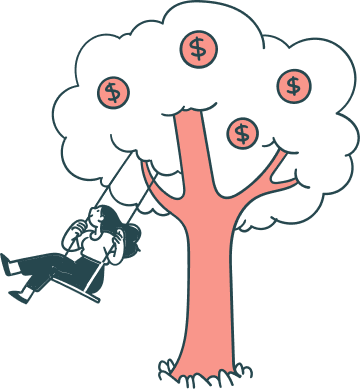When students, parents, and supporters are engaged with your school’s fundraisers, they can change the trajectory of the campaign. The right school fundraiser gets students excited about supporting a good cause and has a positive impact on your school or community. But what steps can schools take to actually achieve this outcome?
Of course, the first steps are to choose a fundraiser that students will enjoy and market the campaign to your target audience of donors. In this guide, we’ll explore other tactics your school can use to improve its fundraisers:
- Hold an event-a-thon fundraiser.
- Get the community involved.
- Encourage and incentivize participation.
- Follow up after the fundraiser.
To select the right fundraising idea, it’s key to have an understanding of what options are age-appropriate for your students and appeal to their interests. First, we’ll explore the concept of “event-a-thons” and how you can adapt these fundraisers to align with your students’ preferences.
1. Hold an event-a-thon fundraiser.
Event-a-thon or “a-thon” fundraisers are peer-to-peer campaigns that often involve participating in an activity, event, or challenge. Usually, participants (in this context, your students) collect pledged donations from friends and family for participating. Some common examples of event-a-thon fundraisers include:
- Walk-a-thons, jog-a-thons, and fun runs
- Dance-a-thons
- Hit-a-thons
- Bowl-a-thons
- Read-a-thons
Clearly, this fundraising format is extremely flexible, allowing your school to choose an idea rooted in sports, skills, or interests your students enjoy. Additionally, organizing an event-a-thon is simple and well-suited to online fundraising. 99Pledges’ list of kid-friendly fundraising ideas breaks down the simple process into these five steps:

- Partner with a fundraising software provider to help you set up donation pages for your school and individual students.
- Ask participants to share their fundraising pages online.
- Encourage participants to collect pledged donations from their families and friends. Donations typically correspond to their participation in your event (e.g., $5 for every mile completed in the fun run).
- Track progress throughout the fundraiser to ensure you are on track to meet your goals.
- After the event, your school receives the pledged donations.
As with any peer-to-peer fundraiser, it’s your participants’ responsibility to spread the word and secure donations. Encourage students and parents to post about the fundraiser and link to donation pages on their social media accounts. Consider writing captions, creating hashtags, and sharing graphics that they can use to make posting easy.
2. Get the community involved.
Depending on the idea you choose, there might be additional ways to generate revenue and bring the community together to support your school. For example, if you hold an outdoor fundraising event like a walk-a-thon, you might recruit volunteers to sell drinks, snacks, and school merchandise to spectators.
Exciting events and fundraising campaigns can also draw the support of community members outside your school, particularly those with an interest in supporting the youth. Get your PTA, local businesses, and other community members and institutions involved with ideas like:
- A percentage night at a local restaurant. Partner with a restaurant and invite families from your school to go out to eat there on a designated night. A percentage of each bill will go to your school or chosen cause.
- A craft or bake sale. Parents who enjoy cooking or baking will enjoy the chance to sell their food in support of a good cause, whether this is at your event or after school. Have artistic parents or students? Try an arts and crafts sale!
- A community movie night. Poll students and families to get a sense of what their favorite movies and genres are. Then, select a few of the most popular options, rent a projector and screen, and sell tickets for outdoor screenings.
- A school or town cookbook. Give students’ families and other community members the chance to have their favorite recipes immortalized in a cookbook. Request submissions well ahead of the fundraiser, compile them together in a book, and sell the finished copies. If you’re looking for a more low-cost idea, eliminate printing costs by creating an eBook instead.
As Funds2Orgs’ guide to fundraising events explains, getting your community involved gives community members the chance to learn more about you, allowing you to build more substantial relationships with them. Remember that by engaging your community, you’ll both tap into a new pool of donors and build your school’s network of supporters by working with businesses.
3. Encourage and incentivize participation.
As a school fundraiser, you know that it can be a challenge to garner the support you need for your fundraiser from students and parents. To inspire participants to share about the campaign and fundraise on behalf of your school, consider using special tactics to motivate them.
To get students involved, try strategies such as:
- Gamifying the fundraising process. Apply elements of gameplay to the fundraiser to appeal to students’ competitive sides. For example, you might set up milestones for different fundraising amounts and award students who reach the milestones badges, awards, or small prizes.
- Offering prizes to top earners. Track each student’s progress as they fundraise, creating a leaderboard based on how many fundraising dollars they earn. Offer prizes to those in the top positions, such as passes to skip homework, school t-shirts, candy, or gift cards.
- Providing frequent updates. When supporters know how close you are to reaching your goals, they may feel more inspired to donate. Set up a fundraising thermometer that tracks your progress in real-time. Host the thermometer on your website and share it on social media, over emails, and in other marketing materials.
If your school holds a peer-to-peer fundraiser, remember that you’ll need to engage donors and participants. Make sure to use tailored strategies for both of these audiences to maximize your revenue.
4. Follow up after the fundraiser.
One important indicator of a successful school fundraising idea is whether your students and their families are eager to continue their support for the cause or even host another fundraiser. Whether you’re fundraising for your school or a community organization, lasting support is central to achieving larger goals.
One of the most effective ways to build loyal relationships with your supporters is to remain in contact with them, keeping your school at the top of their minds. Here are some ways you can foster relationships with your supporters:
- Show gratitude for their contributions. Thanking donors for their generous gifts is critically important. This confirms that you received and deeply appreciate any gift they gave to your school. When sending thank-you messages to donors, make sure to greet them by name, recognize the exact amount they contributed, and share what kind of impact that gift made (e.g., “Your $100 donation bought 20 new books for our library!”).
- Share other ways to get involved. By donating, these supporters have shown that they have an interest in the success of your school and its students. Take the time to share about other ways they can help you reach your goals, as they are likely to participate. For example, they might volunteer with young students who need help reading or contribute in-kind donations of sports equipment to your PE teacher.
- Ask for feedback. Getting input from supporters will help you understand how you can improve future fundraisers to earn more revenue and build a positive reputation in your community. Additionally, accepting and implementing their suggestions shows that you truly value your supporters and their experiences with your school.
Your existing donor base is invaluable. Not only do they contribute money to your school, but they may also share positive things about your school and recruit other donors and volunteers. When you take the time to communicate with them, you can cultivate long-term, loyal relationships that translate into hundreds or thousands of dollars in fundraising revenue.
With creative ideas and enthusiastic student participants, your school fundraiser is sure to be a success and help you achieve your goals. Leveraging these tips will empower your school to build deep relationships within your community that go beyond supporting a single fundraiser or event. Instead, you’ll foster a dedicated and reliable base of supporters who are excited to contribute to your school’s lasting success.



